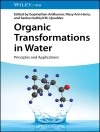The application of biocatalysis in organic synthesis is rapidly gaining popularity amongst chemists. Compared to traditional synthetic methodologies biocatalysis offers a number of advantages in terms of enhanced selectivity (chemo-, regio-, stereo-), reduced environmental impact and lower cost of starting materials. Together these advantages can contribute to more sustainable manufacturing processes across a wide range of industries ranging from pharmaceuticals to biofuels. The biocatalytic toolbox has expanded significantly in the past five years and given the current rate of development of new engineered biocatalysts it is likely that the number of available biocatalysts will double in the next few years.
This textbook gives a comprehensive overview of the current biocatalytic toolbox and also establishes new guidelines or rules for “biocatalytic retrosynthesis”. Retrosynthesis is a well known and commonly used technique whereby organic chemists start with the structure of their target molecule and generate potential starting materials and intermediates through a series of retrosynthetic disconnections. These disconnections are then used to devise a forward synthesis, in this case using biocatalytic transformations in some of the key steps. Target molecules are disconnected with consideration for applying biocatalysts, as well as chemical reagents and chemocatalysts, in the forward synthesis direction. Using this textbook, students will be able to place biocatalysis within the context of other synthetic transformations that they have learned earlier in their studies. This additional awareness of biocatalysis will equip students for the modern world of organic synthesis where biocatalysts play an increasingly important role.
In addition to guidelines for identifying where biocatalysts can be applied in organic synthesis, this textbook also provides examples of current applications of biocatalysis using worked examples and case studies. Tutorials enable the reader to practice disconnecting target molecules to find the ‘hidden’ biocatalytic reactions which can be applied in the synthetic direction. The book contains a complete description of the current biocatalyst classes that are available for use and also suggests areas where new enzymes are likely to be developed in the next few years. This textbook is an essential resource for lecturers and students studying synthetic organic chemistry. It also serves as a handy reference for practicing chemists who wish to embed biocatalysis into their synthetic toolbox.
Mục lục
Introduction and Aims of the Book; Biocatalysis Basics and Principles; Hydrolysis; Reverse Hydrolysis: Reduction; Oxidation; C–X Bond Formation; C–C Bond Formation, Miscellaneous Biocatalysts; Biocatalytic Disconnections and Functional Group Interconversions; Comparison of Different Biocatalytic Routes to Target Molecules; Applications of Biocatalytic Retrosynthesis












